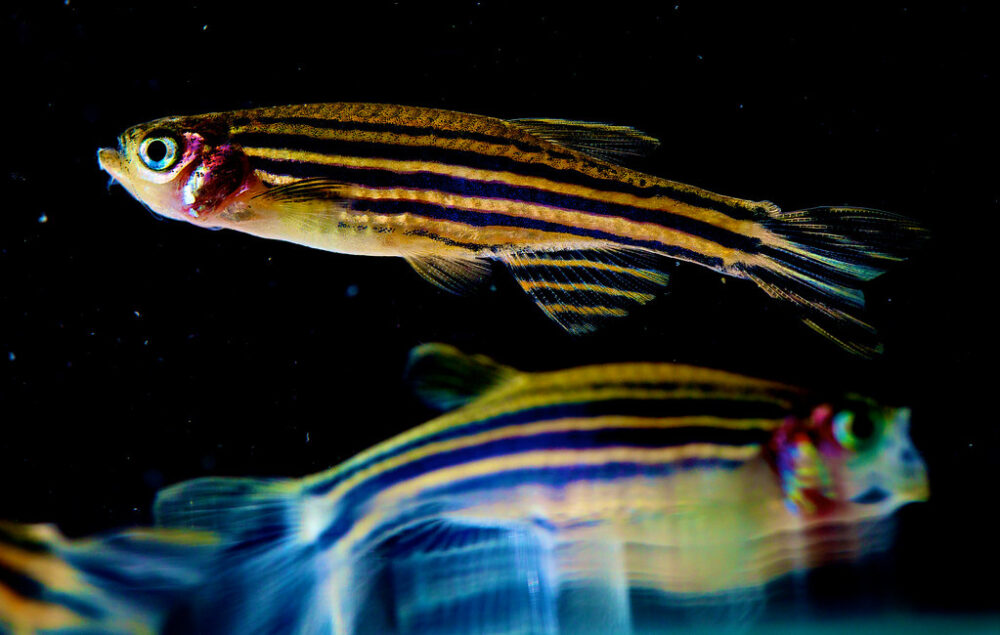Virtual reality (VR) has been an up-and-coming technology in recent years, and much of it is implemented in recreational activities such as video games and computer software. VR’s utility extends far beyond this, though — as one of the most complex ways ever created to mimic reality, VR is a great tool for scientists to replicate conditions that are difficult to control in real life and design experiments that would otherwise be impossible.
This is exactly what Kuo-Hua Huang did while working in the lab of Rainer Friedrich, a scientist at the Friedrich Miescher Institute for Biomedical Research in Switzerland. Neural research is challenging because most methods for measuring brain activity require the subject organism to be physically restrained, meaning if you want to study how a subject responds to physical stimuli, you have few ways to measure the neural activity. VR provides a unique solution to this issue, which is what Huang realized. By creating a VR landscape that interacts with the organism, scientists can essentially recreate reality, allowing them to measure its neural activity with ease.
By creating a VR landscape that interacts with the organism, scientists can essentially recreate reality, allowing them to measure its neural activity with ease.
Huang’s team chose to use adult zebrafish in this study, a common model organism that is popular thanks to its similarity to humans. Not only are our organ systems nearly identical, but our genomes are also very similar. This means that any discoveries made in zebrafish can be compared to human anatomy. To constrain the fish, they attached a set of bars to their skulls, then attached the bars to the sides of the VR tank. The tank was created to make the fish feel as if they were in a natural environment; it contained screens in front of the fish that projected simulations of rocks, other fish, and other stimulants.
The team used cameras and sensors to ensure that the fishes’ changes in direction — characterized by a movement in their tail — were properly reflected in what they saw on the VR system, and monitored the fishes’ brains using multiphoton calcium imaging. To determine the effectiveness of their system, the team of scientists created a series of tests. For example, when they had the VR stop responding to the fishes’ movements, they saw a short burst of high tail movement followed by a longer period of inactivity, which may be explained by confusion as to why they weren’t “moving.”
Further research, conducted by scientists like Huang, has the potential to revolutionize our knowledge of how our brains work and can lead to previously unimaginable treatments for various conditions and diseases.
To see how the zebrafish brains react to a completely foreign situation, the scientists made a much more significant change to the VR system. They reversed the left-right swing of the VR; this means that if a fish tried to turn right, the VR would make it seem as if it had turned left, and vice versa. The researchers noticed a strong response in many of the fish when they made this change. The physical response was typically very strong when the change occurred, leading to a sharp increase in tail movement compared to a normal sensory input. With the neuronal response, however, the team noticed there was a response immediately following the input, meaning that there was a sharp delay between the brain picking up on the error and creating a physical response to it.
Other studies are also making use of VR technology now. One such study by Makio Torigoe looked at reward-based behaviors and how zebrafish brains represent these scenarios. And a literature review by Weijie Chen looked at how VR techniques can be utilized to learn more about the behaviors and brain activity leading up to strokes, which can then be translated into humans and clinical research.
While the utilization of VR for scientific research is a relatively new phenomenon, it has already proven itself as an invaluable tool in fields that previously faced physical constraints on experimental design. Further research, conducted by scientists like Huang, has the potential to revolutionize our knowledge of how our brains work and can lead to previously unimaginable treatments for various conditions and diseases. VR is much more than a cool toy; it’s a way for us to unlock some of the secrets of the world around us in ways that we never thought possible.
Nature Communications (2021). DOI: 10.1038/s41467-021-26010-7
Nature Methods (2020). DOI: 10.1038/s41592-020-0759-2
The British Journal of Psychiatry (2016). DOI: 10.1192/bjp.bp.115.176438
Translational Stroke Research (2021). DOI: 10.1007/s12975-021-00907-3






